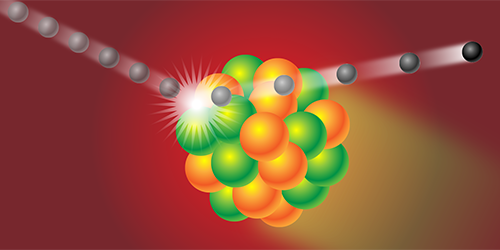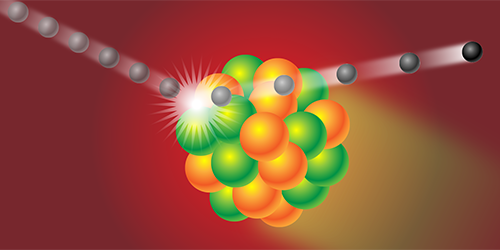Accelerating Dark Matter for Easier Detection
Most experiments searching for dark matter look for evidence of dark matter particles by their collisions with electrons or nuclei in a detector. This method requires that the dark matter particles impart significant energy to other particles during this process. But the energy of some kinds of hypothesized dark matter, like inelastic dark matter and strongly interacting dark matter, is insufficient for this detection method. Now, Harikrishnan Ramani, of both the University of California, Berkeley, and Lawrence Berkeley National Laboratory, and colleagues propose a way to boost the energies of low-energy dark matter particles, potentially allowing a detector to spot them.
The technique takes advantage of long-lived, excited states of atomic nuclei called metastable nuclear isomers. If a low-energy dark matter particle collides with one of these isomers, Ramani and colleagues predict that the collision could accelerate the dark matter particle to a higher energy. The collision should also cause the isomer to decay and produce photons that could be detected. Additionally, if the accelerated dark matter particle then enters a dark matter detector, the detector might be able to see it.
By placing a conventional dark matter detector near a store of metastable nuclear isomers, Ramani and colleagues say that researchers could immediately use their proposed technique. The team suggests using metastable isomers of tantalum, barium, lutetium, or hafnium as the “dark matter accelerators.” These isomers have half-lives ranging from a few minutes to more than the age of the Universe. Some are found in nature and others are byproducts of nuclear reactors, medical treatments, or past scientific experiments.
This research is published in Physical Review D.
–Erika K. Carlson
Erika K. Carlson is a Corresponding Editor for Physics based in Brooklyn, New York.





